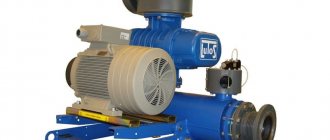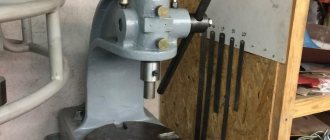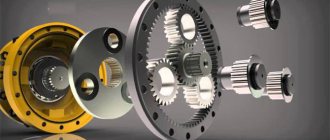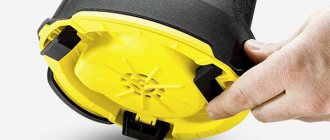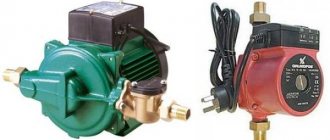A screw jack is a mechanism whose main task is to lift a load and fix it at a height. A screw lift differs from other similar mechanisms in that the mechanism is installed directly under the load, which eliminates the need to use additional tools - chains and ropes. The load is lifted manually by means of a screw.
Many people believe that a mechanical screw jack is used only when changing car wheels, although bridge spans are also moved with the help of similar mechanisms; the bodies of large machines are held in the desired position, powerful springs are compressed, and steel pipes are moved through the soil. The design of the screw device is simple and reliable.
Types of screw mechanical jacks
There are many types of lifting devices for cars, the most popular is the diamond screw jack. A screw jack, the price of which is at an average level, is the most stable and compact.
Car jack
The main advantages are:
- The car is lifted along a vertical plane, without pushing in different directions.
- If the maximum permissible loads are observed, it is durable and does not break.
- It is characterized by increased stability.
- Repairable, folds compactly.
Repair of this type of mechanism occurs without difficulty; the screw part often fails, which can be replaced with a screw-type construction pin. If you have the necessary plumbing skills, it is enough to cut the stud in accordance with the size of the jack and weld a nut on the fastening side. It is possible to make the device yourself, but the time spent is not worth the savings, because the price of a screw mechanical jack starts from 400 rubles.
Mechanical jack
The mechanical jack of the lever-screw type is reliable during operation, thanks to the smallest number of moving elements. The price of such a device on the market is not high, but there are a number of disadvantages. The stability of the device is not at a high level; when lifted, it pushes the car body away from itself. Increased effort is required to lift equipment with such a device, which is not very convenient for women, as well as for long-term work.
In the domestic automobile industry, vertical screw jacks have been used for a long time. The design features a long stroke and smooth force applied to the handle. The lifting height, sufficient for any type of work, made the unit attractive to car enthusiasts.
Vertical screw jacks
Rack-mount screw mechanisms are used less and less due to the high cost and specific purpose of the work. They require the object to be lifted to have special holes for guides. If installed incorrectly, it is easy to damage the car's paintwork.
Bottle devices differ from competitors in having a greater load capacity. There are varieties that can lift up to 5 tons; this solution will help owners of SUVs or minibuses. The design consists of persistent threads with impressive internal elements, which allows you to not worry about durability. The price of the device is high, which makes it difficult to choose between a conventional design; such jacks will help for construction purposes and other purposes.
Bottle jacks
In households, special screw construction jacks are used, which allow you to hold the load at a certain height. Under conditions of frequent use and a larger mass of objects, an electric jack, also of a screw configuration, is used.
Types of jacks and their prices
Based on the principle of operation, the following main types of jacks are distinguished:
Mechanical
A technically simple lifting device, which in most cases is equipped with passenger cars. The work is based on the application of mechanical force to move a working mechanism, for example, a screw stud.
Hydraulic
It works by pumping a liquid, such as hydraulic oil or brake fluid, into the working cavity. Single-valve models are equipped exclusively with a valve that prevents the reverse outflow of liquid, and two-valve versions are additionally equipped with a bypass safety valve, which prevents damage to the jack itself if the permissible load is exceeded.
Pneumatic
The lifting mechanism is activated by pumping air into its cavity.
Some models are capable of operating from vehicle exhaust gases (connected to the exhaust pipe), while the industrial air version requires high-performance compressor equipment.
Electric
This is no longer a type of jack, but a way of operating a working mechanism. In other words, even mechanical models, where the mechanical force is applied by the electric motor shaft, can be considered electric. Some models can be powered by a car cigarette lighter.
Electrohydraulic
The hydraulics are driven by an electric drive. A striking example of the previous point. Some models are additionally equipped with a manual drive.
Pneumohydraulic
The hydraulics are driven by an air compressor.
The following types of jacks are distinguished by design:
Rhombic
A pantograph type tool is pure mechanics.
The lifting part resembles a diamond shape, where each side is movably connected to the adjacent one.
The lateral opposite corners are closed by rotating the pin, causing the upper and lower corners to diverge.
Other names: trapezoidal jack, trapezoid.
Price – from 600 rub.
Tablet
The hydraulic part is in the form of a low-profile cylinder, connected to a separate hydraulic drive.
The cost starts at 3.5 thousand rubles, and depends on the carrying capacity.
Rack and pinion
It is based on a gear rack along which the lifting mechanism moves. Another representative of mechanics. Price – from 3 thousand rubles.
Klinova
The drive can be mechanical or hydraulic.
Another name is an expanding wedge.
The cost is around 10 thousand rubles and more.
Bottle
It got its name because of its design with a sharply prominent main working cylinder. The operation is based primarily on the hydraulic principle.
Such a jack is often called telescopic, since the rod in the initial position is hidden in a cylinder, literally, like the knees of a telescopic fishing rod.
There are single-rod and double-rod.
The last option has another name - double-plunger, and it is notable for the fact that the stroke of its rod is twice that of a similar single-rod model.
Sometimes there are three-rod versions.
Price – from 500 rubles.
Lever
The design is based on a rack, which is extended by means of a swinging drive lever.
Screw jack device
Screw jacks are a simple design capable of lifting large masses of loads. The operating principle consists of converting torque into translational movement; the main structure consists of a screw, nut and gearbox.
A device with a loose nut must be used with extreme caution and monitor the level and quantity of its lubricant. Failure to comply with the maximum loads can damage the screw mechanism.
Increased safety during work is achieved by the presence of a self-braking function.
The device of a car screw jack
The gearbox transmits torque to the support nut, where it lifts the load. There is a more modified screw jack device, where lifting rollers are added to the screws and nuts. Modernization is carried out to improve service life, reduce the coefficient of friction for easier lifting of the car.
Device and characteristics
A classic hydraulic jack consists of the following elements:
- A reserve tank with a lever system through which the working fluid is pumped into the main cylinder.
- A working cylinder with a piston that rises when sufficient fluid is supplied.
- Pickup - the upper part of the piston, designed to rest against the object being lifted.
This element is often supplemented by a nozzle that moves in height relative to the piston rod and is designed to preliminarily stop the pickup without engaging the hydraulic system.
- The supporting base is the base of the body.
In addition, the design provides for the presence of several valves:
- Pumping valve - is responsible for moving fluid from the reserve tank to the working cylinder, blocking its reverse movement.
- Safety valve – prevents the jack from being overloaded. Works like a bypass valve in a hydraulic system.
Material
It all depends on the design and load-carrying capacity of the jack.
Trolley models for passenger cars are often aluminum, while hydraulic truck versions use hardened steel and cast iron.
The material and its thickness directly affect the load-carrying capacity of the mechanism as a whole.
Dimensions, weight and load capacity of jacks
The lifting capacity of a jack is its main characteristic, which is determined by the design.
As a rule, the larger the size of this mechanism, the greater its load capacity.
Thus, a hydraulic bottle model with a lifting capacity of 2 tons and its small height (on average 150 - 180 mm) weighs 2 - 3 kg.
At the same time, a long rack version designed for the same load capacity can have a height of up to 1 meter or more, and its weight is about 10 - 15 kg.
It all depends on the design and purpose of the product.
The most lifting jacks are hydraulic, where some models are capable of lifting and holding weights of up to 100 tons.
Screw-type ones have the smallest load capacity - up to 1 ton.
Rod stroke
Another characteristic that must be taken into account when choosing is the lifting height of the jack.
It represents the maximum distance between the upper pickup point and the support of the product.
Is the sum of the following characteristics:
- The pick-up height is the smallest distance between the top pick-up point and the base support. Drawing a parallel with a car – its ground clearance.
- The working stroke of the rod is the greatest distance between the upper and lower positions of the jack (vertically).
The stroke of the rod directly determines the height to which it is possible to lift the load relative to the original location point.
Main features of a rack and pinion jack
The list of works performed by jacks can be listed endlessly. The rack and pinion design mechanism stands out from its competitors, which is useful in conditions remote from service when repairing a car.
Rack jack
Rack jack device
The design of the mechanism has increased dimensions; it can hardly fit into the trunk of a passenger vehicle. The technical characteristics and features of the rack jack correspond to the dimensions; the design allows you to lift a load weighing up to two tons to a height of more than 70 centimeters. The mechanism is also used in the form of a winch in rural areas; if you correctly adapt the device, it will help rescue the car from difficult conditions.
Principle of operation
How does a 2t mechanical screw jack work? Its operating principle is extremely simple - thanks to the lever, rotational forces are produced. Then, through a worm gearbox, they are converted into linear ones. The jack rises.
If we consider the improved “screw-roller-nut” triple, here a ball or roller is involved in the work. Thanks to it, the driver will have to put in less effort than with a regular pair. At the same time, the ascent speed increases.
Is there a 5t mechanical screw jack? There must be an electric motor. You simply cannot lift such a mass manually. The use of an electric drive significantly increases the efficiency of the mechanism and the speed of its operation.
Hydraulic jacks
A common type of hydraulic jacks are bottle jacks. The main differences are in dimensions and working load capacity. The larger the jack body, the higher its characteristics and ability to lift loads, and, accordingly, the price. Durability and stability make this type of lifting equipment the most used in car repair shops. The design provides a safety valve that does not allow work to continue if the object weight exceeds 25% of the declared one.
Hydraulic jack and its structure
Repairing hydraulic devices is a simple process in which the main thing is to replace the seals and replenish the fluid level. The disadvantage is the increased initial height, heavy weight, and the ability to work only in a vertical position. A type of hydraulic device is a rolling one, which can often be found in auto repair shops.
Vertical
The vertical mechanical screw jack was invented about 30 years ago. Its main components are a screw, a lever and a metal body. The maximum load capacity of such devices is no more than one ton. The main advantages of vertical devices:
- large working stroke of the mechanism;
- low weight, despite the fact that it is completely metal;
- low cost.
- ease of operation (lifting does not require much effort).
To insure against the “breaking” of a vertical jack, experienced car enthusiasts recommend additionally placing logs, bricks or other suitable objects under the body of the lifted car.
Among the disadvantages, it is necessary to note the small contact area. As a result, vertical mechanical jacks are among the most unstable. They can only be used on the most flat surface possible. Also, such tools are very long - they cannot be placed in a regular niche under the trunk floor. And the most important drawback is that lifting is carried out through special eyes.
Pneumatic jacks
Pneumatic jacks are also considered a common type of rolling jacks, often used in large auto repair shops. The device consists of a pneumatic cushion that is inflated with compressed air. Inflatable lifting devices are made independently using a tube from a truck, together with a ball valve to gradually release the air.
Pneumatic jack device
For ordinary car owners, a type of pneumatic design is used that can be inflated from a hand pump or exhaust pipe. Such a mechanism will easily lift even the heaviest car to a height of more than half a meter and allow you to replace a wheel or diagnose the chassis.
Application of screw type jacks
The scope of application of screw-type mechanisms may vary depending on the type of work and purpose. A varied selection of mechanisms according to their characteristics allows the design to be used in various processes:
- Installation and dismantling of car wheels.
- Maintenance and diagnostics of machines.
- Compression of springs and related mechanisms.
- Laying pipes.
- Lifting loads to the required height and moving them.
Lifting system based on jacks
Screw jack as an adjustable shrinkage compensator
Screw-type lifting devices began to be used for lifting loads about two thousand years ago. At that time, the device featured a minimal number of parts in its design, but worked more efficiently than a lever. The main purpose of screw devices is to replace a broken wheel and provide car service. A screw jack is included in every motorist's kit.
Selecting screw lifts
The device is selected taking into account the planned scope of work and after carrying out the necessary calculations. When choosing a jack, first decide whether you have enough strength to use a mechanical device or whether you need an electric drive.
If the load is supposed to be lifted manually, calculations are not carried out, but when more serious tasks are to be performed, the screw device is calculated. Calculations boil down to determining the required power. For this purpose, calculators offered by a number of sites are used.
When choosing a jack, you need to pay attention to its main characteristics - the working stroke and lifting height. For hydraulic devices, the gear ratio is important, on which the force transmitted to the handle and the power of the electric motor depend.
The most common jacks among car enthusiasts are mechanical devices. They have a simple design, are inexpensive, undemanding to storage and transportation conditions, and are easy to repair.
Nevertheless, the most popular are rhombic jacks, because the vast majority of Russian-made cars are equipped with them. If you need to buy a new device, find out the weight of your car and select a jack with the appropriate load capacity. Buy a device with a small margin and do not forget that more powerful mechanisms have greater weight and dimensions, therefore, they need more space in the garage and trunk.
How to choose a screw jack
The choice of jack is made for each type of specific work. It is necessary to accurately determine whether it is possible to use a manual mechanism, or whether it is necessary to use an electric drive. Manual devices do not require preliminary calculations; when working with electromechanical devices, the mass of loads lifted by a jack is accurately measured. The calculation is made to calculate the power of the structure, taking into account the factors of maximum lifting height, working stroke and initial height. Hydraulic mechanisms will require calculation of the force exerted on the handle and the power of the electric motor.
Basic requirements for mechanisms:
- The load capacity is selected according to the type of car; if the design is used as a universal device, it is important to pay attention to more powerful models.
- The lifting height varies, so it’s worth looking at the numbers; the higher, the better.
- The presence of special grooves or cells for lifting on a car requires the use of a device of the appropriate type, otherwise stability is lost.
The most popular type of lifting equipment is mechanical screw designs, which are characterized by low cost and ease of operation. The rhombic type of mechanisms comes complete with almost every modern car, but there are times when you have to select a device for certain jobs.
When purchasing a jack, you should refer to the technical documentation of the car, where the curb weight is precisely indicated. A power reserve is necessary, but you should not be overly insured, because... more lifting devices have increased weight and dimensions.
Reviews from car owners
“The DVB-20 Hi model (the highest) is perfect for a duster, I think you can even take the DVB-20 Mi, if you suddenly need to jack it up out of the mud - it’s a little lower. To my joy, the DVB-20 Hi also fit under the VAZ-2114, with a gap of only 1 cm, but it fit under the standard seats - very successfully!” — review source
“To change the wheels and use them in minor garage repairs, we purchased a new mechanical telescopic jack AUTOPROFI 2 tons (DVB-20 Lo) with a price tag of 985 rubles. After purchasing, I tested the jack for ease of use:
- The jack is not high and easily fits into a car with a lowering of -30
- the long knob allows you to be located further away from the car body, eliminating human contact with the car body
- the effort to raise and lower the jack is very small, even a child can handle it
- The jack’s lifting capacity of 2 tons will allow it to be used not only for passenger cars but also for minibuses and SUVs” - source of review
DIY screw jack
Assembling a screw jack with your own hands is cost-effective if you save on budget or have specific operating conditions. Self-production will cost less than a ready-made version if you have basic plumbing experience, guided by certain schemes.
For manufacturing you will need several rack pipes, a sheet of metal 4-6 mm thick, and a mechanical rod. The pipes are welded in parallel, the base and top are fastened with a piece of metal. Then a nut is welded and connected to a rod at the bottom of the future jack. Next, you need to complete the structure by attaching fastening mechanisms and a handle.
When making lifting devices yourself, it is important to be guided by the purpose of the mechanism. For basic wheel replacement, a compact screw-type device is suitable, which can easily fit in the trunk of a car.
Correct installation is associated with safe work; the process must be monitored to avoid injury or property damage. When working, it is possible to use a static stand as the main support, for example a large stump.
How to do it yourself
To make a lift with your own hands, you need the following materials:
- compressor;
- hydraulic hoses;
- two hydraulic cylinders.
The shaft and electric motor with gearbox for the forklift can be found at an exchange office where old machines are exchanged for new ones. Choose a scheme with accurate load calculations. Make drawings.
Make sure the structure is safe. Manufacture the device according to the drawings indicating the exact dimensions of parts and assemblies. Install the lead screw along which the assembly with the pickups will move. Install the motor and gearbox. Attach the device to the floor with reinforced anchors. Before starting operation, check the reliability of the design.





